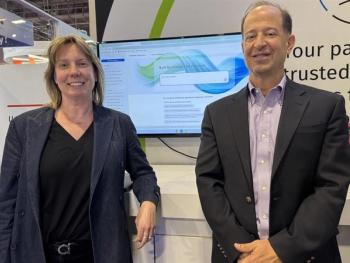
4 Tips to Amplify Patient Satisfaction Surveys
Why a good questionnaire is about more than simply being digital.
Patient satisfaction surveys are growing in popularity among healthcare organizations as the United States health system continues its transition to value-based care. A well-designed and distributed survey can help providers discover hidden issues or gems in their care system. It can also provide useful insights on whether healthcare organizations are meeting patient expectations.
>>
If done right, a patient satisfaction survey can be a key player in building a satisfying and cohesive experience for patients. It can help identify which aspects of care—facility appearance, provider approachability, cost, convenience, etc.—are most important to patients so healthcare providers can plan improvements accordingly.
There’s just one catch: Convincing patients to complete surveys can be tough. Providers need to up their game if they want to gather substantial feedback. To get the most out of patient satisfaction surveys, healthcare organizations may follow these four tips.
Provide a Compelling “Why”
Even if a patient satisfaction survey takes only five minutes to complete, providers are still asking busy people to willingly give up their time. If healthcare entities don’t want to be ignored, they need to give patients a good reason to spare five minutes.
In the communication accompanying the survey, let patients know the provider cares about their experience at the facility and want their journey to be as frictionless as possible. Tell them their feedback plays a vital role in improving quality of care for all patients. Make it clear that all stakeholders want to provide a best-in-class environment and service.
Keep Surveys Brief
If possible, it’s best to keep surveys concise and simple. The longer and more complex a survey is, the less likely people are to participate. Also, if the survey is short and easy to understand, patients typically deliver better (and clearer) feedback.
A top goal should be to ask patient satisfaction survey questions that elicit useful responses. This means keeping questions short and to the point. If a question is lengthy or focuses on more than one aspect of the patient experience, the patients’ answers may be confusing.
Avoid Paper Surveys
Although the healthcare industry is a bit behind on the digital revolution, patients are not. They expect the ease and convenience of completing surveys and other healthcare paperwork on their mobile devices. Thus, a paper survey will be met with disdain.
An online survey is user-friendly and much easier to manage than a paper survey. Patients can complete the survey whenever it is convenient for them, and all submitted data are housed in an organized database for easy analysis.
Follow up Quickly
Patient satisfaction surveys should be sent as soon as possible after the care experience, typically within 48 hours. This allows patients to respond to the survey while their experience is still top of mind.
Sending surveys soon after a patient visit can also help healthcare providers maintain a good reputation. If they have a patient who is highly dissatisfied with their experience, the satisfaction survey will alert the provider early on, enabling an attempt to recover the negative experience as soon as possible.
Chris Byers is the CEO of Formstack, an Indianapolis-based company offering an online form and data-collection platform. Prior to Formstack, Byers co-founded an international nonprofit that was built via remote relationships among partners in Europe, Africa and the United States.
Get the best insights in healthcare analytics
Related








































